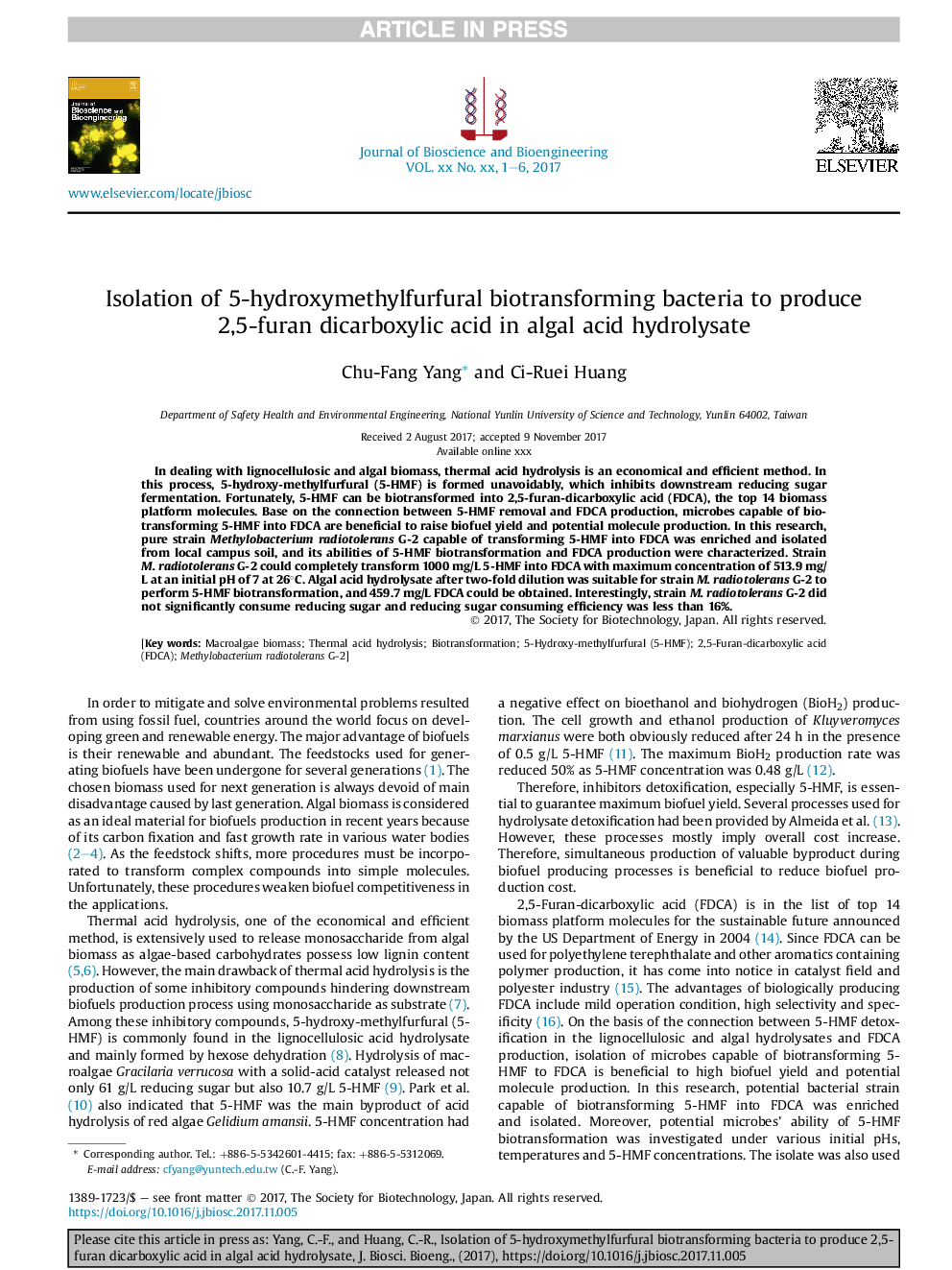| Article ID | Journal | Published Year | Pages | File Type |
|---|---|---|---|---|
| 6489870 | Journal of Bioscience and Bioengineering | 2018 | 6 Pages |
Abstract
In dealing with lignocellulosic and algal biomass, thermal acid hydrolysis is an economical and efficient method. In this process, 5-hydroxy-methylfurfural (5-HMF) is formed unavoidably, which inhibits downstream reducing sugar fermentation. Fortunately, 5-HMF can be biotransformed into 2,5-furan-dicarboxylic acid (FDCA), the top 14 biomass platform molecules. Base on the connection between 5-HMF removal and FDCA production, microbes capable of biotransforming 5-HMF into FDCA are beneficial to raise biofuel yield and potential molecule production. In this research, pure strain Methylobacterium radiotolerans G-2 capable of transforming 5-HMF into FDCA was enriched and isolated from local campus soil, and its abilities of 5-HMF biotransformation and FDCA production were characterized. Strain M. radiotolerans G-2 could completely transform 1000 mg/L 5-HMF into FDCA with maximum concentration of 513.9 mg/L at an initial pH of 7 at 26°C. Algal acid hydrolysate after two-fold dilution was suitable for strain M. radiotolerans G-2 to perform 5-HMF biotransformation, and 459.7 mg/L FDCA could be obtained. Interestingly, strain M. radiotolerans G-2 did not significantly consume reducing sugar and reducing sugar consuming efficiency was less than 16%.
Keywords
Related Topics
Physical Sciences and Engineering
Chemical Engineering
Bioengineering
Authors
Chu-Fang Yang, Ci-Ruei Huang,
